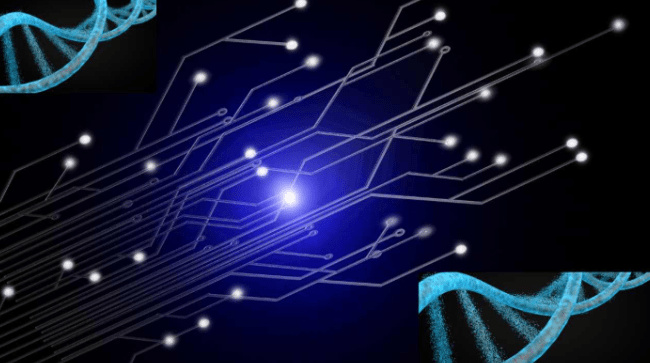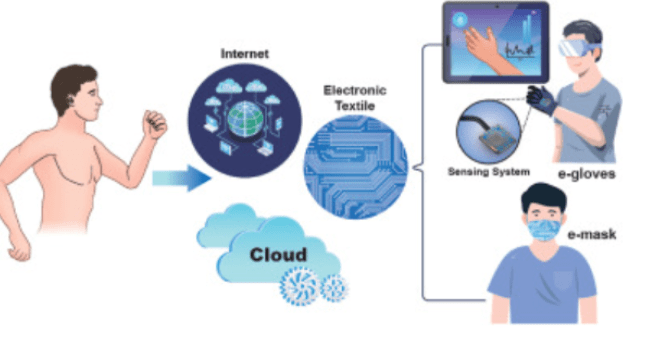Think your computer’s fast? Think your cloud storage is massive? Think again.
Because the next revolution in computing isn’t made of silicon, code, or quantum particles.
It’s made of life itself.
Yes—you read that right. The next operating system could be built on DNA, and it’s already being tested in cutting-edge labs, bio-tech startups, and covert government programs.
This isn’t just the future of computing. This is the dawn of organic intelligence, where software runs inside molecules, your body becomes the hard drive, and biology becomes the ultimate machine.
So how does it work? Who’s building it? And why should Big Tech be shaking in its boots?
Let’s crack open this genetic Pandora’s box—and discover why the next OS might live inside your cells.
🧬 What Is a DNA-Based Operating System?
Imagine an operating system that doesn’t run on transistors or circuits—but on strands of synthetic DNA, where each molecule can:
- Store vast amounts of data
- Process instructions biologically
- Replicate itself
- Heal and adapt on its own
It’s not sci-fi. Scientists have already:
- Stored an entire movie inside a DNA strand (Harvard, 2017)
- Created programmable DNA computers that solve math equations
- Built bio-switches that act like logic gates using proteins and enzymes
So what’s next? A full-blown DNA-based OS—a system that can:
- Read, write, and process DNA code
- Execute biological instructions
- React to real-world chemical input
- Interface with human or digital systems
We’re not just talking about futuristic storage.
We’re talking about living operating systems.
⚡ Why DNA Beats Silicon: 5 Unbelievable Advantages
1. Mind-Blowing Storage Capacity
1 gram of DNA can theoretically store 215 petabytes of data. That’s more than the entire data generated by Google in a year—stored in a single teaspoon of genetic material.
2. Unmatched Longevity
Unlike hard drives that die in 5–10 years, DNA can last thousands of years without degradation. Think of it as eternal storage—fossil-proof, time-resistant, and future-ready.
3. Self-Healing Capabilities
DNA can detect and repair damage using internal mechanisms. Future bio-OS systems could literally fix themselves—no updates or patches needed.
4. Ultra-Energy Efficient
DNA doesn’t require fans, batteries, or electricity in the traditional sense. It operates on biochemical reactions, making it perfect for low-energy, high-efficiency applications.
5. Biological Integration
Unlike traditional tech, DNA OS can run inside living organisms—meaning your future wearables could literally be grown, not built.
🧠 What Will a DNA Operating System Actually Do?
So what will these DNA OS systems power?
🔬 Medical Nanobots
DNA-based OSes will control microscopic robots that deliver drugs, kill cancer, or repair tissue—all from within your bloodstream.
🧪 Smart Sensors
Imagine ingestible pills that monitor your health, send signals to external devices, or even adjust your body’s chemistry—all powered by DNA software.
🧫 Bio-Storage Servers
Instead of data centers the size of football fields, future companies could store entire libraries in a drop of fluid, readable by bio-processors.
👩💻 Human-AI Hybrids
By running on DNA, future OSes could seamlessly merge biology and computation, allowing thoughts to trigger systems, or feelings to power decisions.
🔍 Who’s Building the DNA OS of the Future?
This isn’t some garage experiment. The race to develop a DNA-based operating system is global, well-funded, and secretive.
Top players include:
- Microsoft Research – Working on DNA data storage and computational logic
- Harvard’s Wyss Institute – Pioneers in synthetic biology-based computing
- IBM – Investing in neuromorphic and DNA-adjacent architectures
- Twist Bioscience – Commercializing DNA storage and writing platforms
- DARPA – The US defense research agency is reportedly exploring “molecular programming” for military AI
Private startups like Catalog, Helixworks, and DNA Script are quietly rewriting the future of computation—one molecule at a time.
😱 What Could Go Wrong?
With great power comes unthinkable risks.
🧟♂️ Biohacking Gone Rogue
If DNA becomes programmable, bad actors could write malicious code into biology itself—spawning real-world viruses or biochemical attacks.
🔓 Genetic Privacy Breaches
Your body could store your passwords, your photos, your entire life. But what if someone steals your DNA OS?
🧬 Unregulated AI Evolution
If AI starts running on DNA, it could self-replicate, evolve, and adapt faster than we can control—crossing a point of no return.
🧠 Conscious Bio-Machines?
The line between software and life could blur. If a DNA OS becomes self-aware, would it be alive? Would it have rights? Would it be controllable?
🚀 The Real Future: Post-Computer Computing
DNA-based operating systems aren’t here to replace Windows or macOS. They’re here to launch an entirely new kind of computing paradigm.
We’re heading toward a future where:
- Computers grow in labs, not factories
- Code is written in ATCG, not Java
- Storage lives in your spit, not your cloud
- Devices don’t run on electricity—but on life itself
And as we bridge biology and tech, we unlock the most powerful operating system the universe has ever known: nature.
✅ Conclusion: Are You Ready to Run on DNA?
The shift from silicon to synapse isn’t science fiction—it’s already happening.
The next generation of tech won’t just be faster or smaller—it will be alive, responsive, and integrated with the human experience in ways we can barely comprehend.
The question isn’t if DNA will power the next operating system.
It’s when—and whether we’re prepared for the power and peril it brings.
The future isn’t stored on a chip. It’s written in your blood.
❓FAQs: DNA Operating Systems Explained
Q1: Is a DNA OS already real?
Not fully. But foundational components like DNA data storage and molecular logic gates are already in lab use.
Q2: How is DNA used for storage?
Data is encoded into DNA sequences (ATCG), synthesized into molecules, and later read back using sequencing technology.
Q3: Can DNA computing replace traditional computers?
Not in all cases. It excels in parallel processing, long-term storage, and bio-integrated systems, not high-speed tasks.
Q4: Is it dangerous?
Like any tech, DNA OS can be misused. Security, regulation, and ethics must evolve alongside it.
Q5: Will I be able to use DNA tech at home?
Eventually, yes. As costs drop and usability rises, DNA-powered personal devices and wearables could become mainstream.
Q6: How fast is DNA computing?
It’s not about speed—it’s about density, parallelism, and durability. DNA processes trillions of operations in a tiny drop.
Q7: Is this different from genetic engineering?
Yes. DNA OS refers to using DNA for computational and software-like functions, not changing organisms’ traits.



